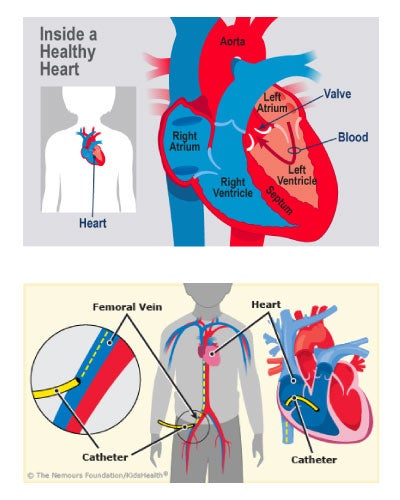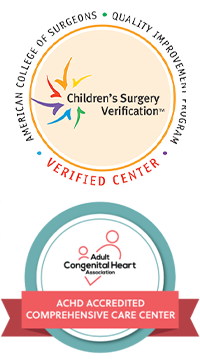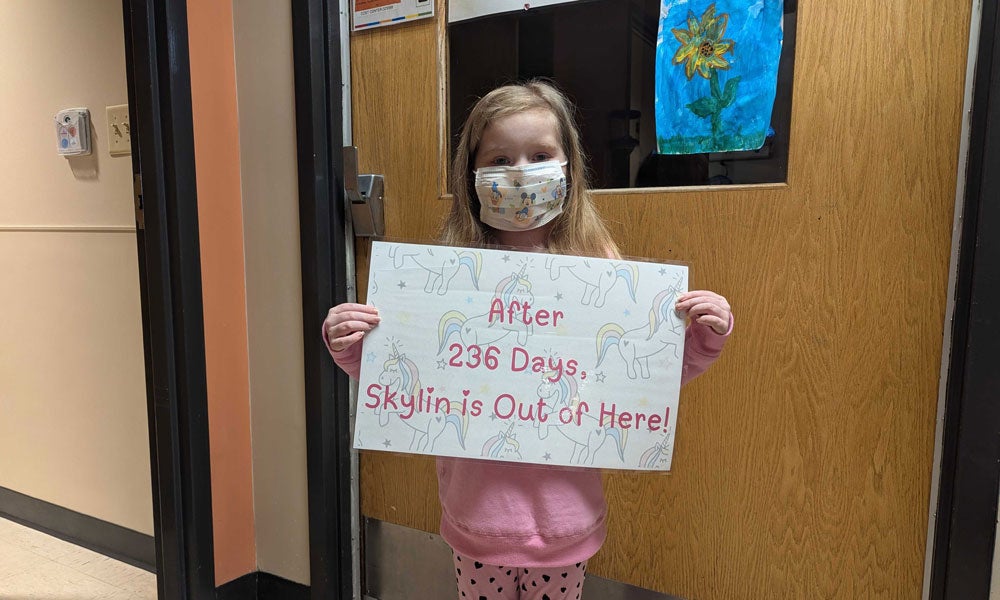Cardiologists at Norton Children’s Heart Institute use cardiac catheterization in a child to collect information about the heart, produce videos of the blood flow through and away from the heart, and perform other procedures to fix heart conditions and defects.
The catheter is a long, thin tube that the cardiologist inserts into the body through a vein or artery. Most commonly, this is done through a small cut in the skin close to the groin, but sometimes other large vessels are used including veins in the neck.
Why Have a Cardiac Catheterization?
Cardiac catheterization in a child can be used to diagnose heart conditions and provide more information if known heart conditions exist. During a catheterization, cardiologists can:
- Measure blood pressure and oxygen levels in the heart and lungs
- See how well the heart pumps
- Take pictures of the heart
- View the heart’s structure
- View the heart’s electrical system
Norton Children’s Heart Institute is the leading provider of pediatric heart care in Louisville and Southern Indiana.
Norton Children’s has a network of outreach diagnostic and treatment services conveniently located throughout Kentucky and Southern Indiana.
During a Cardiac Catheterization in a Child:
- The child may need to be sedated (asleep). A specially trained pediatric cardiac anesthesiologist will administer the general anesthesia.
- The cardiologist then threads a small, long, flexible tube (catheter) through a blood vessel until it reaches the heart and major vessels around the heart.
- The cardiologist may inject X-ray dye through the catheter to help them see the structures in and around the heart more clearly. This can help them find and diagnose heart defects as well as heart function.
- The cardiologist can take pressure measurements and get blood samples from the different chambers and blood vessels around the heart. These readings give detailed information about how the heart is working.
- Sometimes, the cardiologist can find and diagnose heart conditions during the catheterization and treat them right away.
- A heart catheterization usually takes two to five hours to complete.
- Recovery time can vary from six hours to an overnight stay. You and your child should come to the hospital prepared to stay overnight.

Why Choose Norton Children’s Heart Institute
- Norton Children’s Hospital has been a pioneer in pediatric cardiothoracic surgery, performing Kentucky’s first pediatric heart transplant in 1986 and becoming the second site in the United States to perform an infant heart transplant.
- The American Board of Thoracic Surgery has certified our cardiothoracic surgeons in congenital heart surgery.
- The Adult Congenital Heart Association has accredited Norton Children’s Heart Adult Congenital Heart Disease Program as the first comprehensive care center in Kentucky and Indiana treating adults born with a heart defect.
- More than 17,000 children a year visit Norton Children’s Heart Institute for advanced heart care.
- Norton Children’s Heart Institute has offices across Kentucky and Southern Indiana to bring quality pediatric heart care closer to home.
- The Jennifer Lawrence Cardiac Intensive Care Unit (CICU) at Norton Children’s Hospital is the largest dedicated CICU in Kentucky, equipped with 17 private rooms and the newest technology available for heart care.




